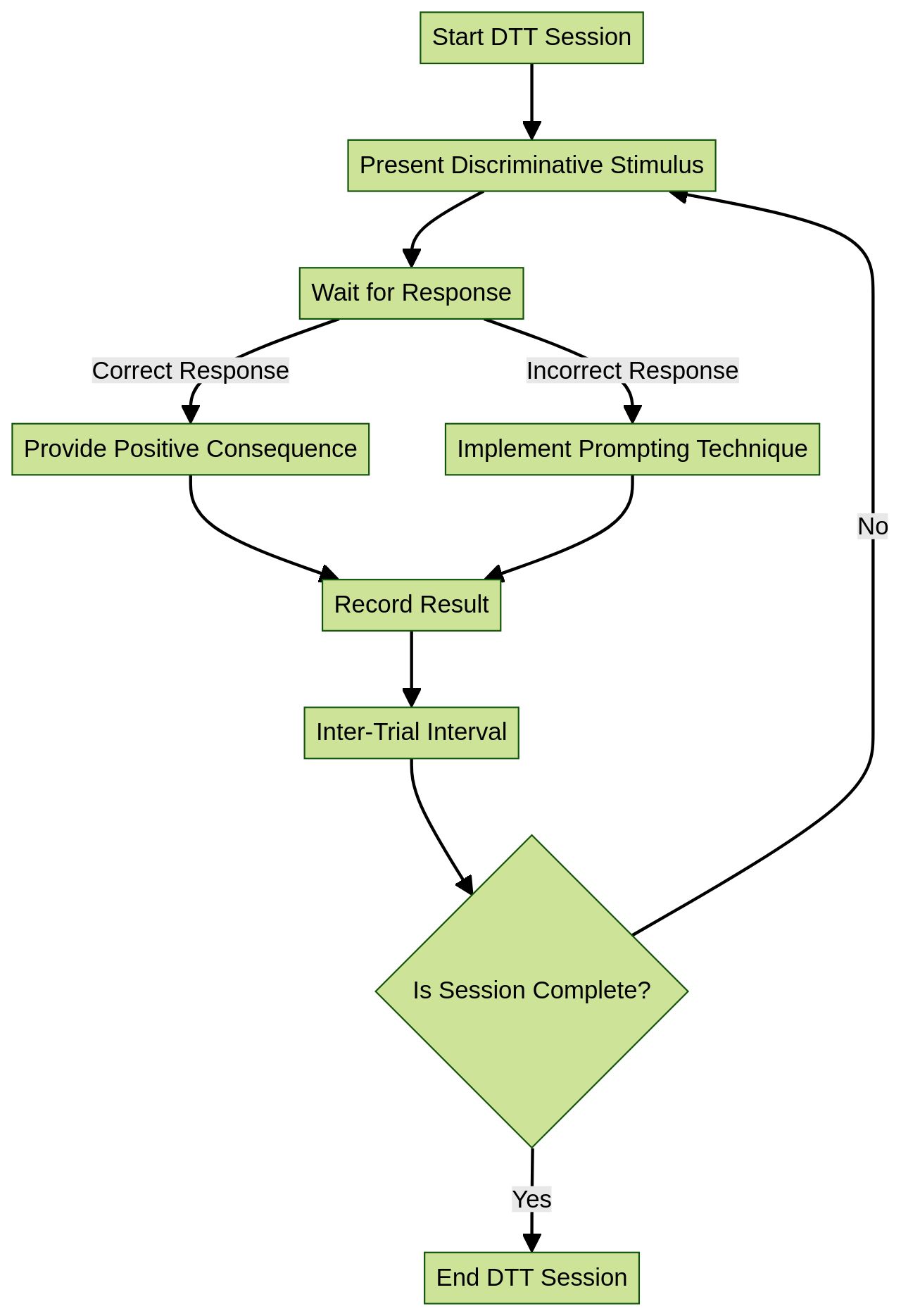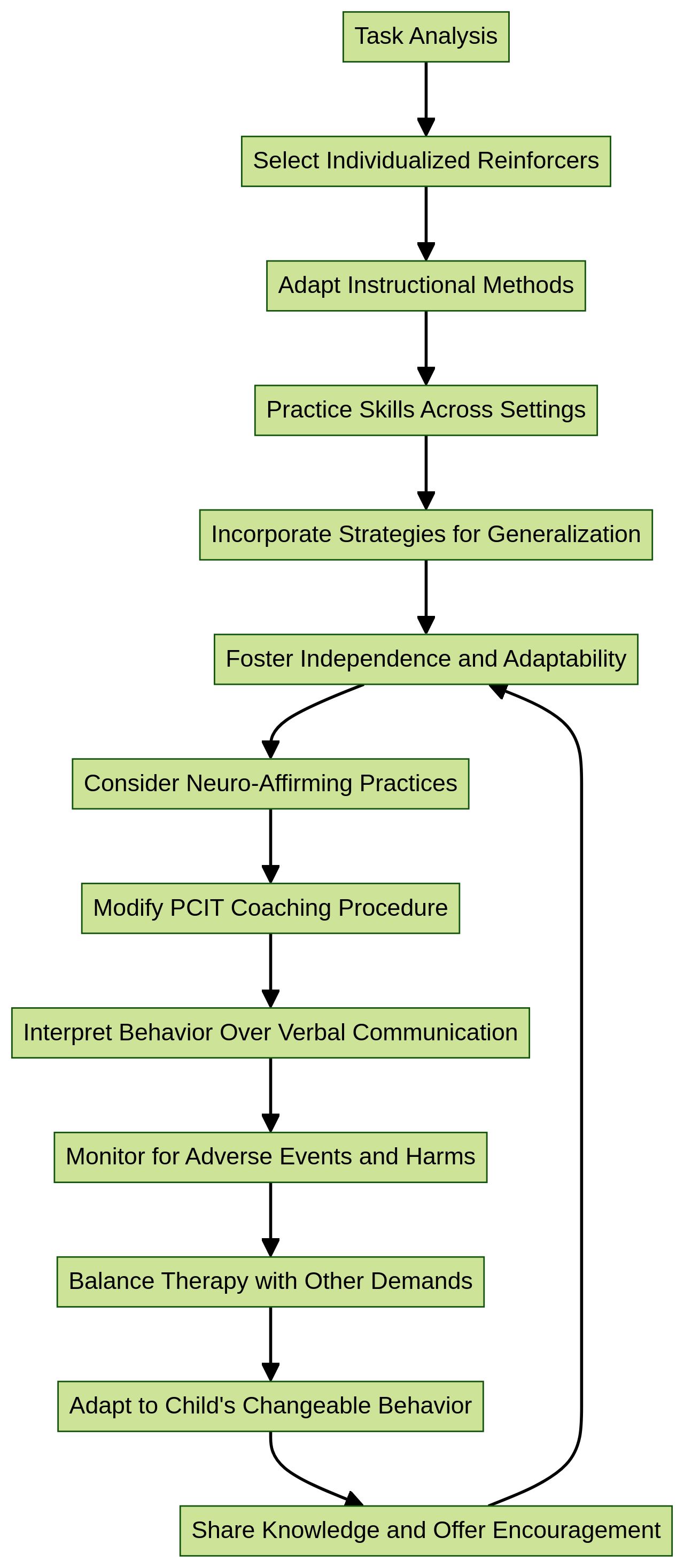Introduction
Discrete Trial Training (DTT) is a cornerstone of Applied Behavior Analysis (ABA) therapy, used to teach vital skills and behaviors to individuals with autism and other developmental disabilities. In this article, we will explore the importance of DTT in maintaining and improving skills during periods without structured learning, such as summer breaks.
We will also discuss the individualization of DTT, the role of motivating operations, and personalized strategies for effective therapy. Additionally, we will examine case studies and examples that highlight the real-world application of DTT in different settings. Join us as we dive into the world of DTT and its impact on the well-being of children with autism.
Understanding DTT ABA
Discrete Trial Training (DTT) is a cornerstone of Applied Behavior Analysis (ABA) therapy, instrumental in teaching individuals with autism and other developmental disabilities vital skills and behaviors. By deconstructing intricate tasks into manageable steps, DTT facilitates focused teaching and positive reinforcement.
This method is particularly crucial for maintaining and improving skills during periods without structured learning, such as summer breaks. Research highlights the risk of skill and behavioral regression during these times, as seen during the COVID-19 pandemic when over a third of individuals with autism experienced exacerbated behavior problems.
Tailoring DTT to the individual's needs is paramount, as evidenced by a study in which treatment components were individualized, resulting in substantial reductions in problem behavior and enhancements in communication and compliance. Additionally, it’s essential to communicate the data collected during ABA sessions to all involved, including therapists, educators, and family members, to ensure consistency and the best outcomes.
While ABA is widely recognized and legally mandated in most states, its high cost and the scarcity of trained professionals are challenges that need to be addressed. Findings from recent studies indicate that while comprehensive early intervention is beneficial, the intensity and setting of ABA must be individualized, considering factors such as the child's baseline skill levels and the goals of therapy. Importantly, a balance between therapy and family life is essential for the well-being of the child and their family. With the landscape of autism interventions being highly varied and the evidence for many still emerging, it is crucial to approach each case with a personalized strategy, informed by the latest research and tailored to support the child's integration into both educational settings and home life.
The Five Steps of DTT
Discrete Trial Training (DTT) is a structured intervention method that breaks down complex skills into smaller, teachable components, which are then taught to individuals with autism spectrum disorder (ASD) through a series of steps. The process begins with a discriminative stimulus, where a therapist presents a specific cue to elicit a targeted response. This cue may be a spoken word, a visual aid, or a gesture.
The individual is then expected to produce a response to the cue, which should be clear and measurable. Upon a correct response, consequence follows in the form of positive reinforcement such as praise or access to a favorite activity. If the desired response is not achieved, prompting techniques are employed to guide the individual towards the correct behavior.
Finally, an inter-trial interval provides a short pause between trials for the individual to assimilate the feedback and ready themselves for the next step. This method aligns with the scientific principles of behavior modification and has been utilized in various forms of therapy. For example, in both randomized and sensorized therapy sessions, children's progress was evaluated using tools like the Autism Diagnostic Observation Schedule (ADOS) to measure changes in behavior.
Additionally, studies have shown that parents' involvement and coaching can significantly enhance the effectiveness of interventions like DTT, particularly in areas such as communication and social interactions. By adapting to the unique needs of each child and considering the potential for behaviors to serve regulatory functions, therapists can provide more personalized and neuro-affirming care. Moreover, recent research has highlighted the necessity for a balanced approach to therapy that respects family dynamics and the child's well-being, rather than adhering to a rigid 'one size fits all' model that may require intensive and intrusive treatment schedules.

The Role of Motivating Operations in DTT
Understanding the individual needs of children with autism is paramount, and Motivating Operations (Mos) are a cornerstone in tailoring Discrete Trial Training (DTT) effectively. MOs are environmental variables that alter the value of a reinforcer, thereby influencing the likelihood of a behavior occurring.
Establishing Operations (EOS) increase the desirability of a reinforcer. For instance, a child's hunger makes food a powerful motivator.
Conversely, Abolishing Operations (AOs) reduce the appeal of a reinforcer, such as when a child's engagement in a favorite activity lessens the impact of other, less preferred rewards. By astutely leveraging MOs, therapists can individualize DTT, enhancing its impact on each child's unique set of needs.
Recent research underscores the importance of customized approaches in interventions. For example, the Early Start Denver Model (ESDM) and ACQUIRE Therapy have shown promising results in addressing the complex needs of children with developmental disorders.
ESDM, with its emphasis on naturalistic teaching and communication skills, has been shown to improve critical daily living skills in autistic children. Similarly, ACQUIRE Therapy's guidelines assist therapists in adapting strategies across various motor impairments. These innovative models exemplify the necessity of personalized intervention plans. The significance of bespoke therapy is further highlighted by a recent study, demonstrating that a pancreatic enzyme supplement reduced irritability and hyperactivity in children with autism, suggesting that even subtle biochemical individualities can influence therapeutic outcomes. This aligns with the emerging perspective that recognizes the unique social skills of neurodivergent children, advocating for neuro-affirming practices that respect their individual ways of communication and self-regulation. Tailoring interventions to the unique needs of each child is not just a clinical preference; it is a fundamental shift towards a more inclusive and effective approach in supporting the developmental journey of children with autism.
Personalized Strategies for Effective DTT Therapy
Customizing Discrete Trial Training (DTT) for children with autism is a dynamic process that requires a deep understanding of each child's unique traits and capacities. By employing task analysis, therapists can deconstruct skills into smaller, achievable steps, enhancing the learning process with clear, incremental goals. This approach not only simplifies complex tasks but also provides a structured framework for consistent teaching and positive reinforcement.
Selecting individualized reinforcers is another key strategy. By integrating preferred rewards, therapists can significantly boost a child's motivation and participation in therapy sessions. This personalized touch ensures that the therapy aligns with the child's interests, making the learning experience more enjoyable and effective.
Adapting instructional methods to fit each child's learning style is crucial. For instance, some may benefit from visual aids due to their strong response to visual stimuli, as suggested by the TEACCH approach, which emphasizes the importance of visual learning and structured classroom environments. Others might excel with auditory cues or hands-on activities.
Tailoring these teaching methods can lead to substantial improvements in engagement and skill acquisition. Moreover, the generalization of skills is a fundamental objective of DTT. Practicing skills across various settings and with different individuals encourages children to apply what they've learned in therapy to their everyday lives.
This approach helps bridge the gap between the therapy environment and the real world, fostering independence and adaptability. Incorporating these strategies into DTT sessions not only creates a more captivating and effective learning experience but also promotes the development of new, healthy neural pathways, as recent research on deep brain stimulation and Rett syndrome has demonstrated. Such advancements in neuroscience offer hope for refining therapeutic approaches to better serve the needs of children with autism and related disorders.

DTT in Real-World Settings: Case Studies and Examples
Understanding early autism signs, which can appear between 9 and 18 months, is critical for tailoring interventions like Discrete Trial Training (DTT) to each child's unique needs. These signs include diminished social attention and responsiveness, differences in emotional expression, and motor delays. Despite the availability of screening tools like the M-CHAT-R/F during well-child visits at 18–24 months, disparities in real-world settings persist.
Research highlights a stark contrast in the tool's effectiveness in research versus primary care environments, particularly for girls and children of color. A study of over 25,000 children screened in primary care found the M-CHAT-F's sensitivity to be low, with a positive predictive value of just 14.6%. This underscores the necessity for precise, scalable screening methods to bridge the gap in early diagnosis and intervention, leading to better outcomes.
In the quest for early intervention, the importance of personalized DTT applications in natural settings like home and school is paramount. Success stories and practical applications illustrate how giving children a sense of control in their environment can significantly alleviate their anxieties. Stakeholder discussions at organizations like YAI confirm the effectiveness of such tailored approaches.
Moreover, the urgency for early and accurate diagnosis is echoed by The Autism Community in Action (TACA) and NeuroQure, which aim to shorten the diagnostic journey for ASD, emphasizing the need for interventions from the earliest age possible. The integration of DTT in everyday life not only supports the individual's progress but also respects the family's dynamics and time. As we move forward in the Autism Renaissance, it's essential to adopt flexible, family-centered strategies that honor the therapy-life balance, allowing for meaningful engagement and fostering independence in various settings.
Conclusion
In conclusion, Discrete Trial Training (DTT) plays a vital role in maintaining and improving skills for individuals with autism and other developmental disabilities. By individualizing DTT to meet each child's unique needs and leveraging motivating operations (MOs), therapists can tailor therapy effectively.
The structured framework of DTT, along with personalized strategies like breaking down skills into manageable steps and selecting individualized reinforcers, enhances the effectiveness of therapy. Real-world case studies emphasize the importance of early autism signs recognition and precise screening methods for early intervention.
By working closely with therapists and implementing personalized strategies, parents can empower their children to reach their full potential. It is essential to integrate DTT into everyday life while respecting the dynamics and time of the family. In supporting children with autism, understanding the value of DTT therapy is crucial. Together, we can create an inclusive and effective approach that promotes the well-being and development of children with autism.




